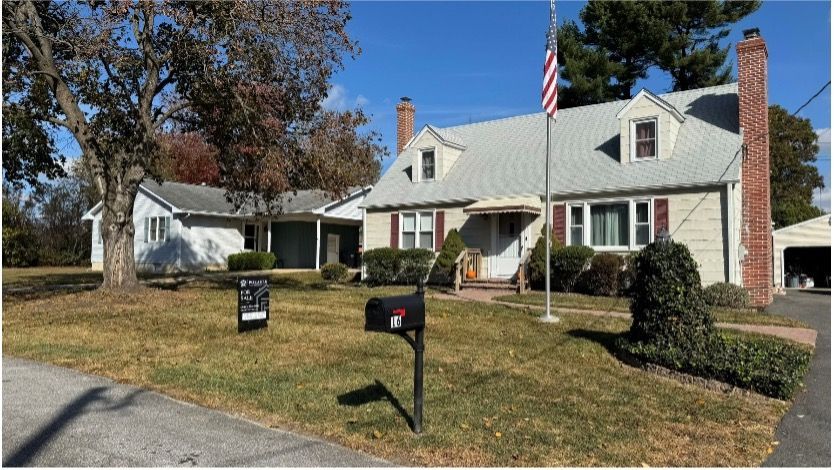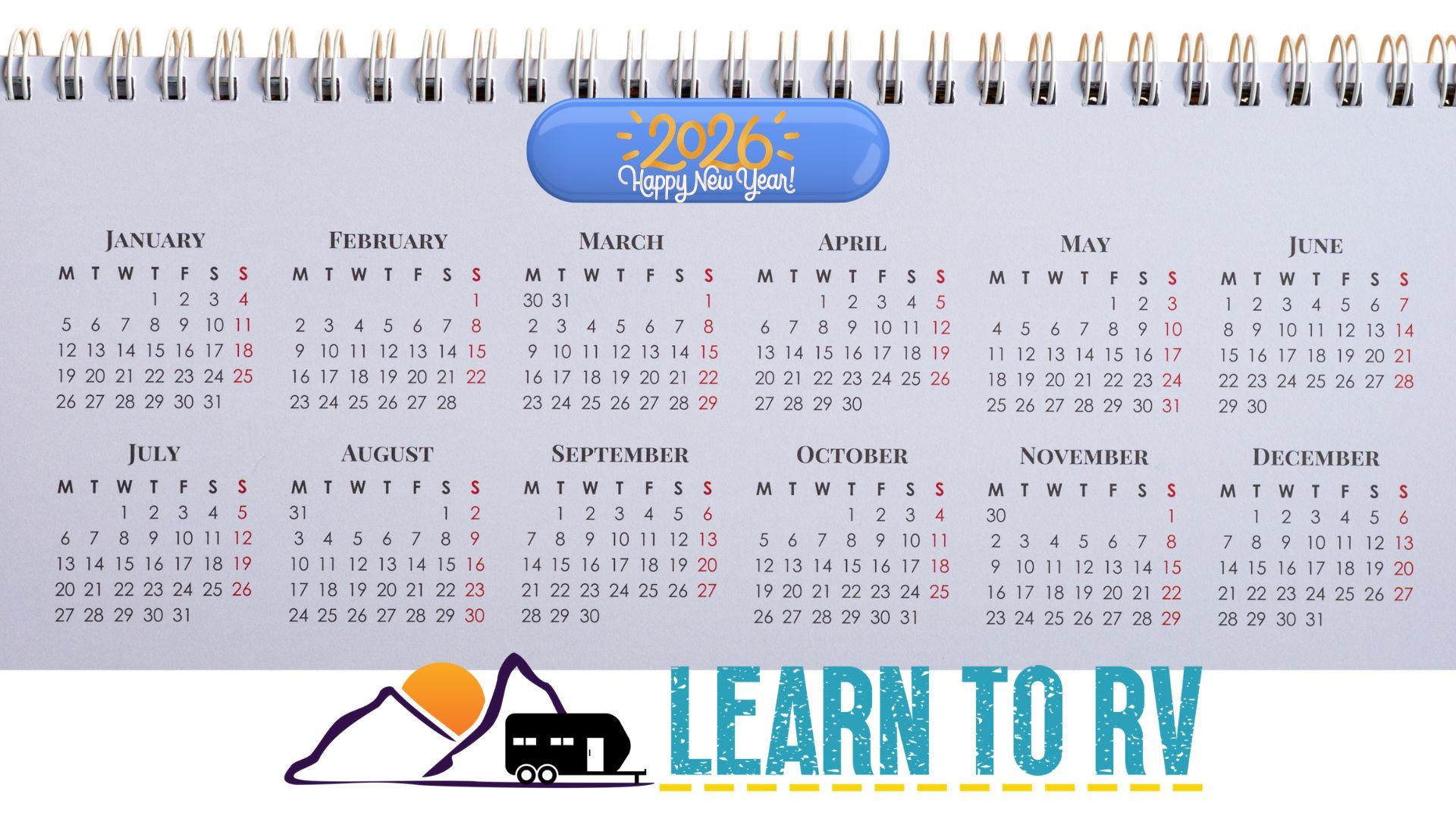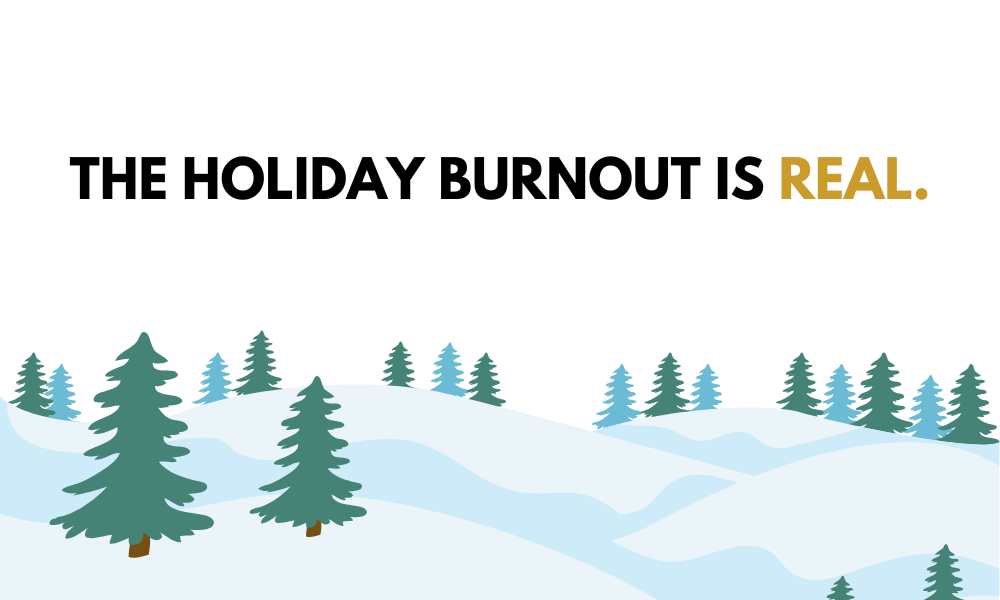The RVer’s Guide to Beating the Summer Heat
Jennifer Aggio • July 8, 2025
Summer RV life comes with epic views, open roads, and plenty of sunshine, but when the temperatures soar, keeping your rig cool becomes a serious priority. Whether you're parked long-term or exploring new places, managing heat inside your RV can make all the difference in comfort and sanity.
This guide is full of practical strategies to help you stay cool in your RV, no matter where you are or what kind of setup you have. From simple habits to smart upgrades, these tips will help you beat the heat and make the most of your summer adventures.
Start with Smart Habits
Sometimes the best way to beat the heat doesn’t require fancy gadgets, just a little planning and awareness. These everyday habits might seem small, but when combined, they can make a big impact on how comfortable your RV stays throughout the day. From timing your routines to minimizing heat from within, these smart strategies are your first line of defense against the summer sun.
“A cool RV means fewer meltdowns, kids and grownups included.”
1
Cool Your RV Off in the Morning Before It Gets Hot
One of the most effective ways I’ve found to stay ahead of the summer heat (without a lot of investment) is by chilling down the RV early, and I mean early like 6am or earlier. First thing in the morning, I crank the AC down to 60°F and let it run while the outside air is still relatively cool. I’ll even throw on some layers—hoodies, socks, the works—just to soak up that chill before the sun starts baking everything.
Why? Because getting the rig as cold as possible before the heat hits helps hold that cooler air inside longer. And if it’s going to be a hot day those windows won’t even open, you’re just letting in a blast furnace. So instead, I keep everything shut: windows closed, shades drawn, and all that trapped cool air becomes our secret weapon against the afternoon heat.
I’ve learned I can deal with a little cold in the morning way better than dealing with an overheated, grumpy crew in the afternoon. Pre-cooling sets the tone for a better day all around.
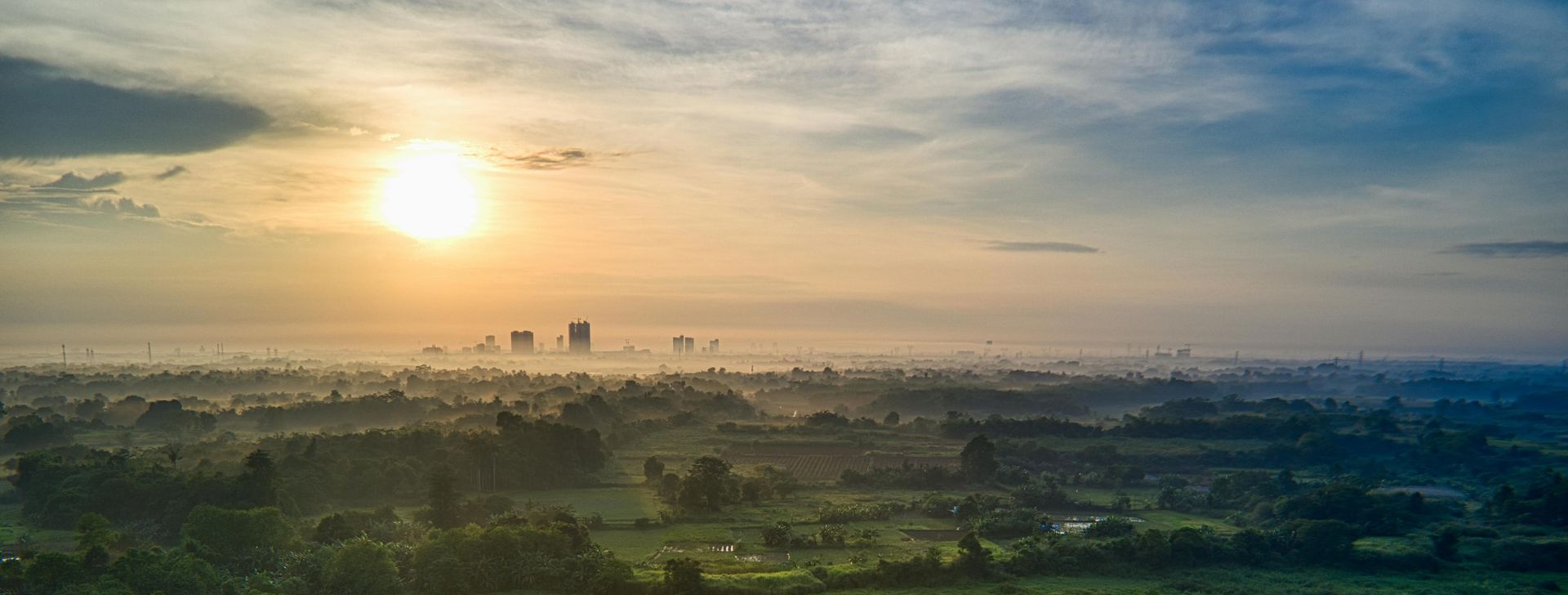
2
Minimize Opening Doors
Every time that RV door opens, cool air rushes out and hot air pours in, undoing all your efforts to keep things comfortable inside. During the hottest parts of the day, try to limit how often the door gets opened.
Work together as a family to make it a team effort. If multiple people need to head outside, coordinate so everyone goes out at the same time. And before you even touch the door handle, make sure you’ve got everything you need in hand. No back-and-forth trips. The goal is to make that door open once, and close fast.
A little planning goes a long way when you're trying to hold onto that hard-earned cool air.
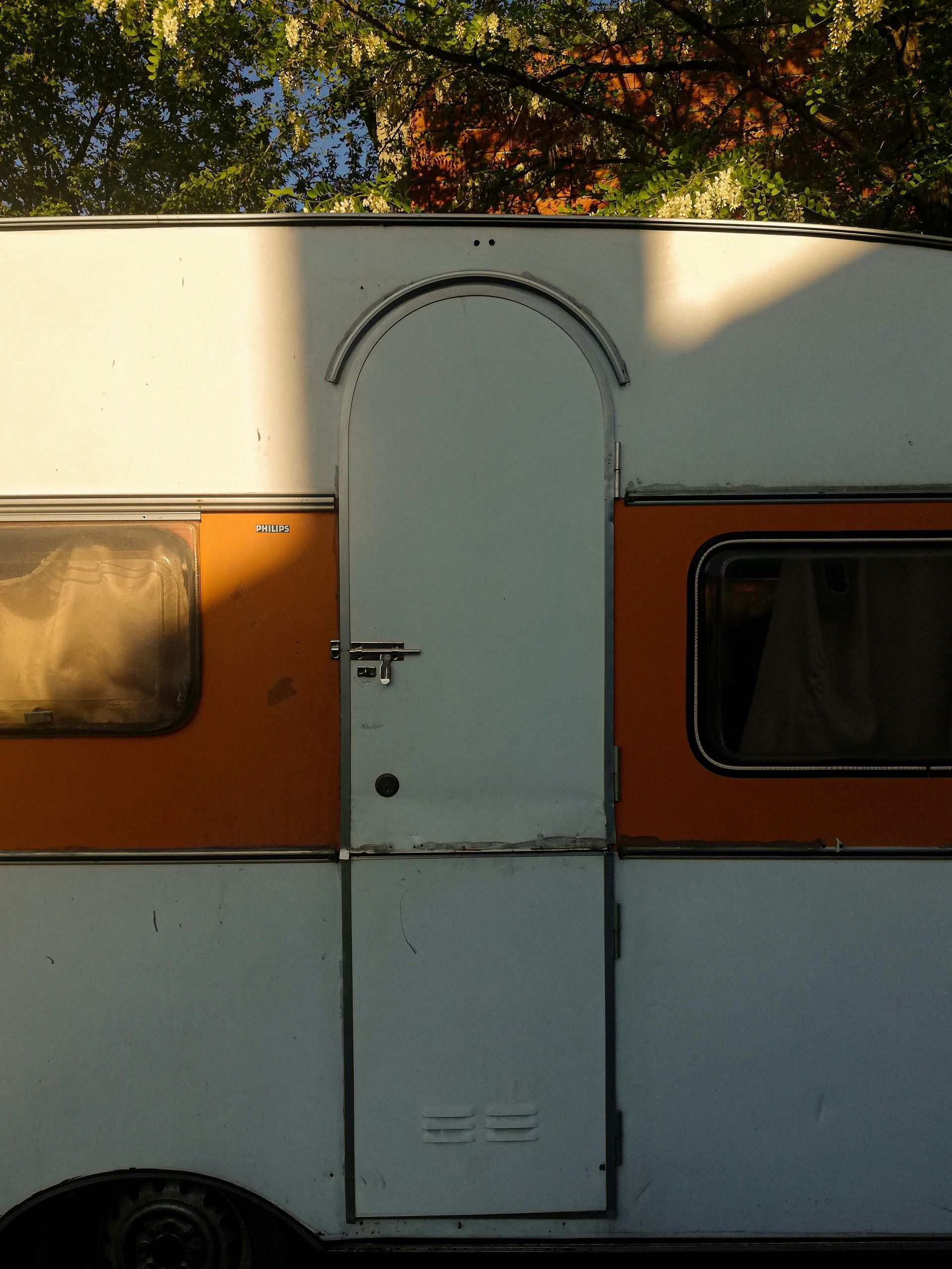
3
Keep Lights Off and Limit Tech Use
It might not seem like much, but every little thing that generates heat adds up, especially in a small space like an RV. Overhead lights, TVs, laptops, game consoles, and other electronics all produce heat while they’re running. Even your phone charger gives off a little warmth.
During the hottest part of the day, switch off unnecessary lights (especially if they aren’t LED), and try to minimize electronic use when possible. Instead, embrace slower, screen-free activities that don’t contribute to the heat. Read a book, work on a puzzle, play a family board game, or relax outside in the shade if there’s a breeze.
In the battle to keep your RV comfortable, reducing heat sources is just as important as blocking them out, and it might just lead to some unexpected quality time, too.

4
Cook Outdoors (or Skip the Heat Altogether)
Firing up the stove or oven inside your RV is a surefire way to raise the temperature fast. On hot days, avoid cooking indoors as much as possible. Instead, take the meal prep outside—grill, use a Blackstone, or even cook over the fire if you’re feeling adventurous.
For those days when it’s just too hot to cook at all, plan ahead with no-cook meals. Think sandwiches, wraps, pasta salad, charcuterie boards, or even breakfast-for-dinner with yogurt parfaits or overnight oats.
If you do need to cook inside, opt for appliances that give off minimal heat like a slow cooker, air fryer, or Instant Pot. They’ll still get the job done without turning your RV into a sauna.
The less heat you generate inside, the easier it is to stay cool all day long.
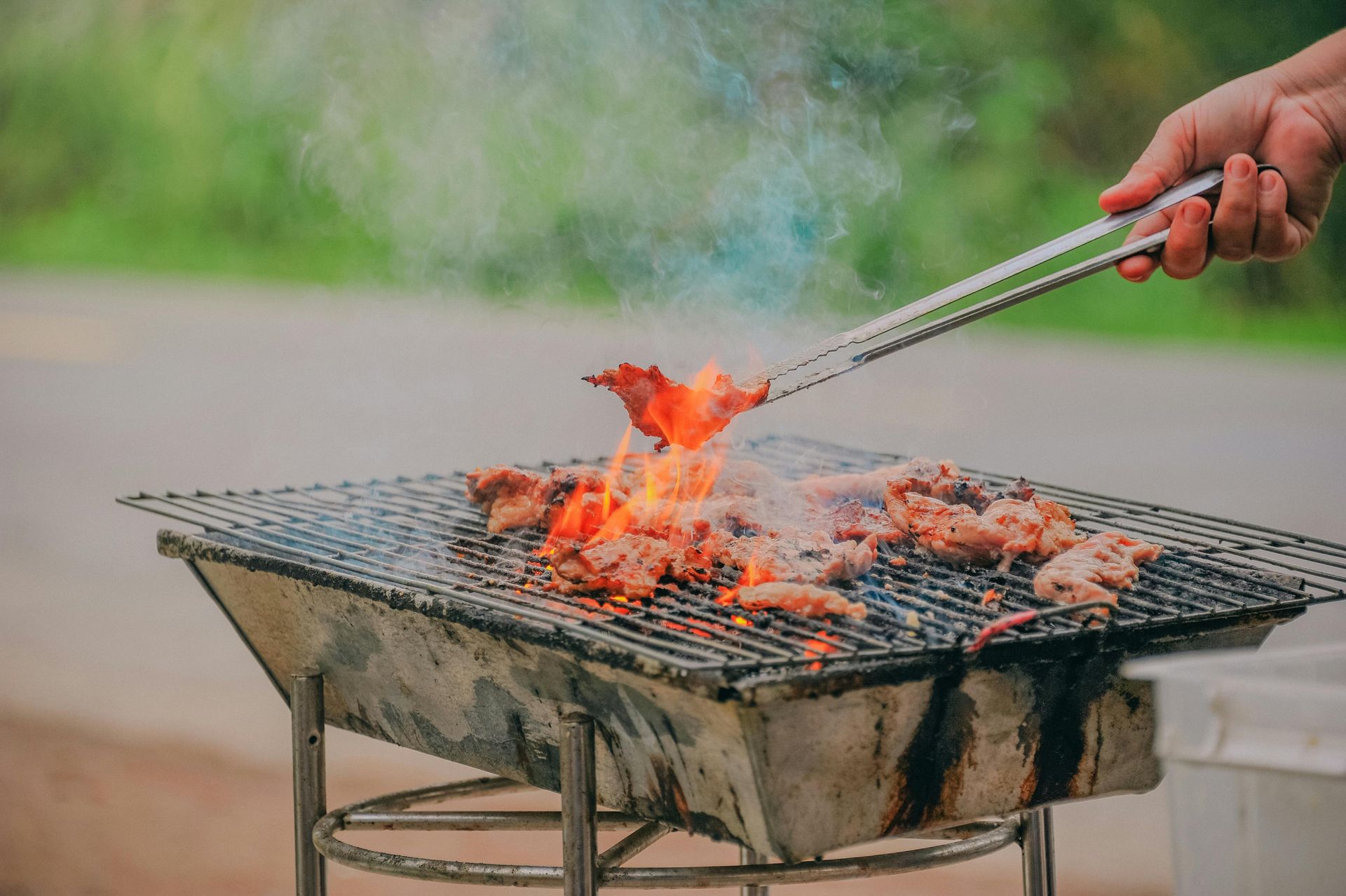
5
Save the Hot Showers for Night
(or Take It to the Bathhouse)
There’s nothing like a steamy shower—except when it turns your RV into a sauna. Taking a hot shower in the middle of the day not only cranks up the heat but also adds a ton of humidity, which your AC then has to battle.
Even early morning showers can backfire. That’s the time when you should be cooling your RV down and trapping in the chill for the day. Adding steam and heat first thing just makes it harder for your AC to do its job, and can cancel out all your pre-cooling efforts.
Instead, plan showers for the evening when outside temps have dropped and your RV isn’t already struggling to stay cool. Even better? Use the campground bathhouse if one’s available. It keeps the heat and moisture out of your rig entirely, and gives your water heater and holding tanks a break too.
It may seem like a small thing, but timing your showers can make a big difference in managing the heat inside your RV.
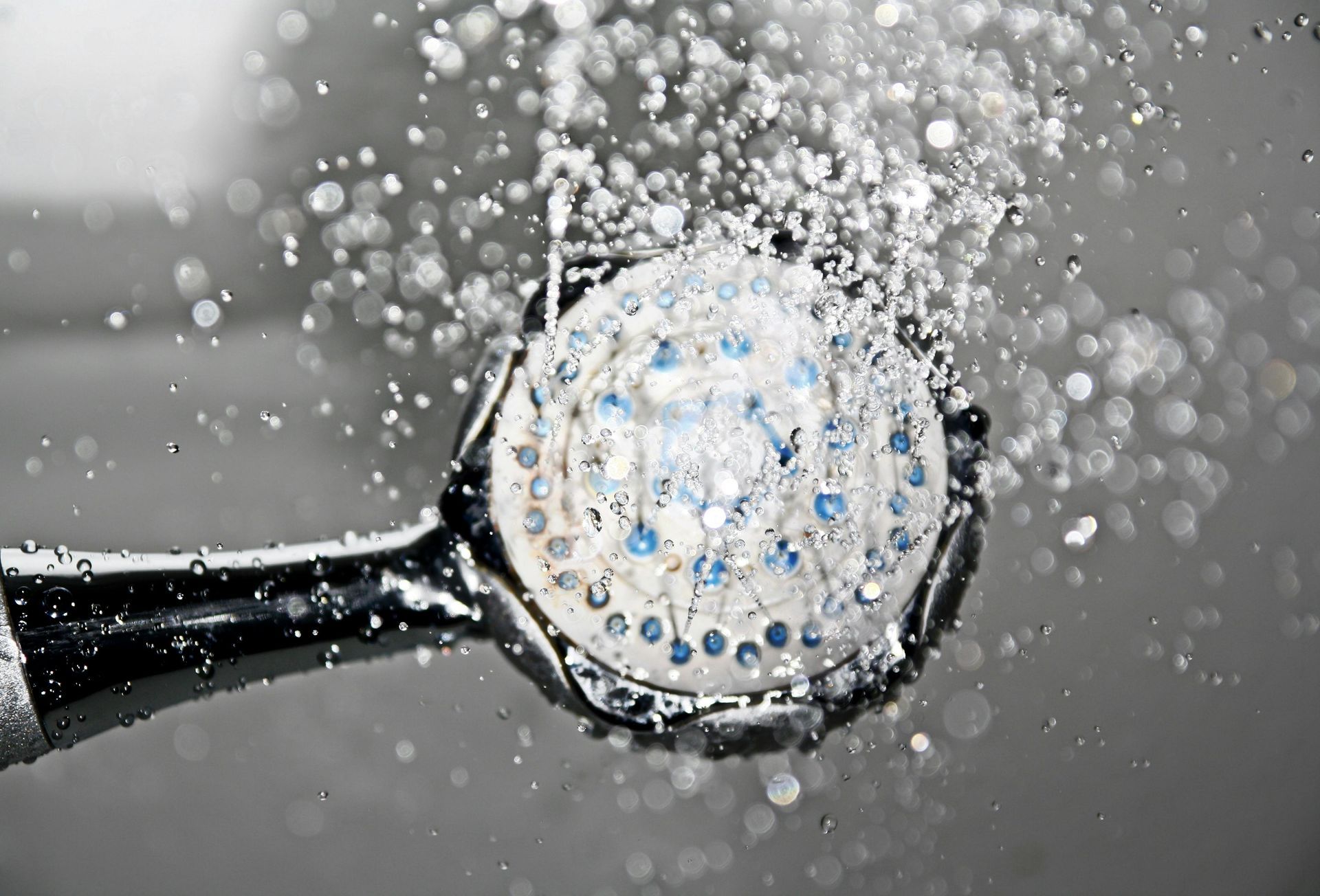
6
Escape to Air Conditioning When You Can
Sometimes, the best way to cool down your RV... is to not be in it. When the afternoon heat hits its peak and your AC is working overtime, that’s a great time to plan errands, hit the grocery store, visit a library, or grab a coffee and take advantage of someone else’s air conditioning for a while.
Not only does it give your RV’s cooling system a break, but it gives you and your crew a much-needed energy reset. If you work remotely, consider spending a few hours at a local coffee shop or café with free Wi-Fi. Got kids? Hit the local library, bookstore, or even just walk the aisles of Target for a bit.
It might not sound like a major strategy, but timing your outings around the heat of the day can make a big difference in how manageable those summer afternoons feel inside your RV.

Strategic Parking & Shade
Shade isn’t just a luxury—it’s your RV’s summer survival strategy.
When it comes to staying cool in your RV, where you park—and how you manage the sun around your rig—can make all the difference. Whether you're on the move or stationary for a while, being intentional about shade and sun exposure helps reduce heat gain before it even becomes a problem. From smart parking choices to creating your own shade, this section covers practical ways to keep the sun from turning your RV into a sauna.
Park in the Shade
It might sound obvious, but choosing a shaded campsite can make a huge difference in how hot your RV gets, especially in the afternoon. Even partial shade over your roof or large windows can reduce heat absorption and ease the load on your AC.
If you're staying somewhere long-term, take a few extra minutes when booking or scouting your site to look at tree cover and sun patterns. East-facing morning sun is usually manageable, but that late-day west-facing heat? Brutal.
And don’t forget—shade doesn’t just cool your rig, it can also protect your tires and roof from UV damage over time. Win-win.
Create Your Own Shade with a Shelter or Roof Cover
If you're staying in one place for a while, especially through the summer, providing full-roof shade for your RV can make a dramatic difference. Permanent and semi-permanent RV shelters like metal carports or pole barns are excellent at keeping the sun off your rig, but they come with limitations. Most campgrounds and RV parks don’t allow you to build or install these structures, and they’re not practical for RVers who move frequently.
That’s where Shade RV comes in. Shade RV offers a portable roof cover designed specifically for RVs. It sits above your rig, creating an air gap that helps block radiant heat without physically attaching to your roof. It’s lightweight, travel-friendly, and likely to be allowed at most parks since it isn’t a permanent fixture.
We’ve seen it reduce interior temps by up to 15°F, especially when used in combination with other cooling strategies. It’s a fantastic option if you’re stationary for a season or even just riding out a heatwave in one spot.
So whether you’re installing a custom-built carport on your own property or looking for a travel-friendly option like Shade RV, creating overhead shade is one of the most effective ways to keep your RV cooler from the top down.
Create Partial Shade Around Your RV
If you can’t park in natural shade, create it, especially on the sunniest sides of your RV. Setting up a shelter next to your rig can drastically reduce how much heat beats down on your windows, walls, and outdoor living space. Even partial shade can ease the load on your AC and make a noticeable difference in comfort.
This approach is especially helpful if you're staying put for a few days or longer and need a break from the relentless sun. Plus, it gives you a cooler place to relax, cook, or hang out outdoors.
Here are some great partial shade options to consider:
· Clam Quick-Set Shelter – Easy to set up and take down, with optional side panels for even more coverage. This is a great option for an outdoor shaded space you can sit in if theres a breeze. We recommend either the Kuma brand or the Gazelle brand.
· RV Awning Shade Screens (like ShadePro or Carefree Drop Shades) – Attach to your existing awning and block the sun without blocking airflow. We ordered the Vista Shade from ShadePro.
· Reflective Tarp or Shade Cloth – Affordable and flexible. Drape over the west-facing side of your RV, over windows, or above your outdoor seating area.
· Pop-Up Canopy Tent – Perfect for creating a shaded dining or prep space outside, or for covering your outdoor cooking setup. Something like this that is easy to put up and down as needed.
Pro Tip: Position your shade solutions on the west-facing side of your RV in the afternoon. That’s when the sun is strongest and most likely to heat things up inside.
Install Slide-Out Toppers
Slide-outs are great for giving you more living space, but they also add more surface area for the sun to heat up. The tops of slide-outs are usually exposed and can soak up a lot of heat throughout the day, especially if you’re parked in direct sun.
Installing slide-out toppers (also called slide awnings) helps reduce that heat absorption by creating a barrier between the sun and the slide roof. They also offer added benefits like keeping leaves, branches, and rainwater from collecting on top of your slides, things that can lead to leaks or damage over time.
If your RV didn’t come with them installed, they’re definitely worth the investment, especially if you’re stationary for long stretches or find yourself camping in sunny climates often..
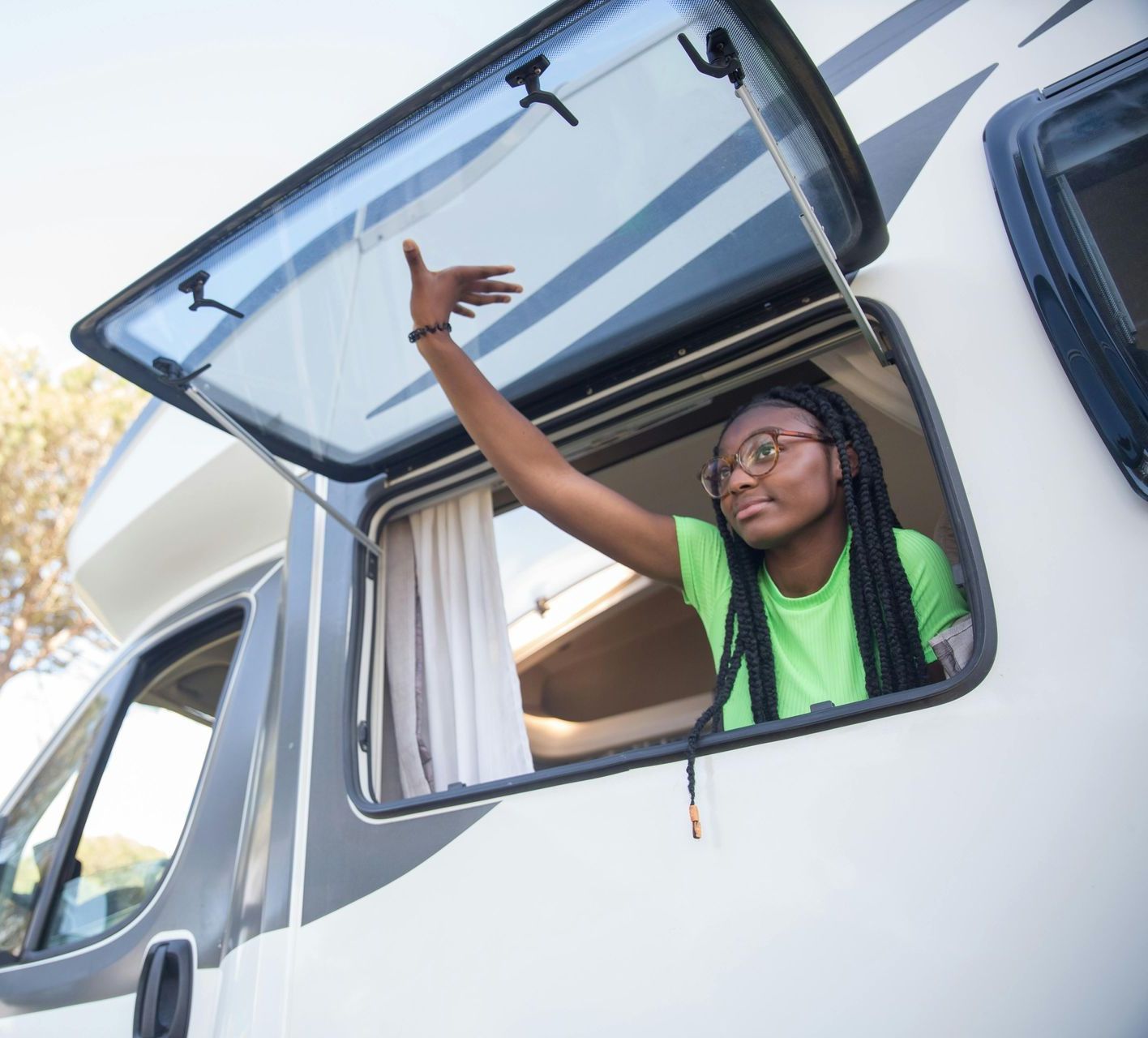
Window & Vent Insulation
Your RV’s windows, vents, and skylights might let in beautiful natural light—but they also let in a ton of heat. Without proper insulation, these areas can quickly become the main source of rising temperatures inside your rig. Fortunately, there are several easy and affordable ways to block out that unwanted heat and keep the cool air where it belongs, inside. This section covers simple upgrades that help you insulate smarter and stay more comfortable all summer long.
Reflectix in the Windows
Reflectix is a go-to solution for RVers battling summer heat—and for good reason. This lightweight, reflective insulation helps block radiant heat from entering your rig through the windows. It’s an easy, affordable way to make a big difference in your interior temps.
Simply cut sheets of Reflectix to fit your windows and slide them in place during the day. They work especially well in combination with blackout curtains or thermal panels to trap even more heat before it gets inside. You can roll them up and tuck them away when not in use or I’ve also just laid them flat under a mattress or behind the couch!
Where to Find Reflectix:
You can grab
Reflectix at most hardware stores like
Lowe’s, Home Depot, or Ace Hardware, and it’s also widely available on
Amazon. It’s typically found in the insulation section and comes in rolls.
Pro Tip:
Cut the
Reflectix to the edge of the window frame, and use
3M Velcro strips to secure it. That way, you can easily pop it in when the sun is blazing and take it down when it’s cooler, no wrestling or taping required.
Line Cabinets with Reflectix
If you’ve ever opened a cabinet on a hot afternoon and been hit with a wave of heat—especially one on an exterior wall, you know just how much warmth builds up behind those doors. Cabinets that sit against the outside of your RV can act like little ovens, trapping heat and warming up everything inside, from canned goods to electronics.
Lining the backs (and even sides) of these cabinets with Reflectix can make a big difference. It helps insulate against radiant heat coming in through the walls, keeping your stored items cooler and helping regulate overall interior temps.
This is especially helpful in pantries, bathroom cabinets, and overhead compartments that face direct sun throughout the day.
Quick Tip: Use a roll of Reflectix and cut it to size for the interior walls of your cabinets. You can use Velcro, double-sided tape, or simply wedge the panels into place, no permanent modification required.
It’s a small project with big payback, especially in the middle of a summer heatwave.
Install UV Tinting on Your Windows
One of the more subtle but super effective ways to reduce heat inside your RV is by installing UV window tint. These films are designed to block out a large percentage of the sun’s ultraviolet and infrared rays, the stuff responsible for heating up your rig and fading your interior.
Tinting your windows helps keep your RV cooler, protects your furniture and cabinetry from sun damage, and adds a layer of privacy during the day. It’s especially helpful on large windows or those facing the afternoon sun.
You have a couple of options:
· DIY Tint Film Kits – Available online and at auto parts stores. These are budget-friendly and can be applied with a spray bottle, squeegee, and a little patience.
· Professional Installation – If you're not into DIY or want a flawless look, many mobile tinting services or auto detailers will come to you and apply the film to your RV windows.
Bonus Tip: Combine window tinting with Reflectix and blackout curtains for the ultimate heat-blocking combo, especially on west-facing windows.
Use Thermal Curtains or Blackout Curtains
Windows are one of the biggest culprits for heat gain in an RV, especially if they're not well-insulated. While Reflectix and tinting help, thermal or blackout curtains add another layer of defense by blocking heat from entering your living space, and keeping the cool air inside longer.
Thermal curtains are lined with insulating material designed to reduce heat transfer, while blackout curtains are made with thicker, light-blocking fabric that also helps keep the sun's rays at bay. Both work well, and when used together with Reflectix or window tint, they create a strong barrier between your interior and the sun.
They’re especially useful on:
· Large panoramic windows
· West-facing windows that get afternoon sun
· Windshield curtains in Class A/C motorhomes
· Sliding patio doors on toy haulers or fifth wheels
Style + Function:
If you don’t want to sacrifice your interior aesthetic, consider hanging a decorative curtain in front of a thermal panel. You can even DIY a set by lining cute curtain panels with thermal backing from the fabric store.
Tip: Use
Velcro or magnetic strips on the sides to keep curtains snug against the wall or window frame for extra heat-blocking power.
Insulate Your Roof Vents (From the Inside and Outside)
RV ceiling vents are great for ventilation, but in the summer, they also let in a surprising amount of heat, even when closed. Without insulation, these spots can become mini greenhouses, radiating heat into your RV all day long.
Start on the inside by using foam vent insulator pillows. These quilted cushions are designed to fit snugly into standard 14" x 14" ceiling vents, blocking heat, sunlight, and even drafts. They're especially useful over sleeping areas and living spaces that get full sun exposure.
But don’t stop there, insulating from the outside can make an even bigger impact. Products like the MaxxAir Maxx Vent Cover mount over your existing vent, allowing you to leave it cracked or open while still shielding it from direct sun and rain. These covers promote airflow while reducing heat transfer into your rig, perfect for fans like MaxxAir or Fantastic Fans.
Dual Protection Tip:
Use both a
foam pillow on the inside and a
vent cover on the outside for maximum insulation. You'll cut down on radiant heat, preserve cooler air inside, and protect your vent dome from UV damage over time.
Cover Your Skylights
Skylights are great for letting in natural light, but in the summer, they turn into heat magnets. Those domed covers sit directly in the sun, and even when they're tinted, they can radiate a surprising amount of heat into your RV’s interior.
There are two ways to tackle this: from the inside and the outside.
Inside:
Cut a piece of
Reflectix to fit your skylight frame or use an insulated shade. These are easy to pop in during the heat of the day and remove when you want the light back.
Or grab one of these shades off Amazon!
Outside:
If you're stationary or staying somewhere for a while, consider
covering the skylight dome from the roof using a shade panel, UV-resistant cloth, or even a small piece of Reflectix held in place with bungee cords or magnets (depending on your setup). Just make sure it’s secure and doesn’t block any ventilation. In the summertime we will cover our skylight with a bag of sand or wood chips which serves a dual purpose of protecting our skylight from summer hail storms because we can get bad hail where we are.
Bonus Tip: The shower skylight is usually one of the biggest heat offenders, installing a permanent interior cover or a removable insulated option here can make a huge difference in managing daytime temps.
Don’t underestimate how much heat can come through even a small skylight, covering it is a quick, high-impact fix for a cooler RV.
Cover the Windshield and Dash in Motorhomes
If you’re in a Class A or Class C motorhome, you already know, your windshield is like a giant magnifying glass for heat. That huge sheet of glass lets in an enormous amount of sunlight, quickly turning your front cab into a furnace and raising the temperature in the rest of the RV.
To combat this, use insulated sunshades, Reflectix panels, or custom-fit RV windshield covers. These barriers help block radiant heat and UV rays from pouring into your living space. They’re especially important if your rig faces west or south in the afternoon.
Dash covers are another smart addition. They don’t just protect against cracking and fading—they also absorb less heat than a bare dashboard and help prevent radiant heat from bouncing back into the RV.
Options to Consider:
· Reflectix or Foil Sunshades – Affordable and effective, cut to size.
· Custom-Fit Windshield Covers – Brands like ADCO, Magna Shade, or Intro-Tech make covers designed for specific RV models. This is a great one from ShadePro.
· Fabric Dash Mats – Found at RV supply stores or online.
Bonus Tip: If you’re parked for a while, exterior windshield covers block heat before it even reaches the glass, making them even more effective than interior ones alone.
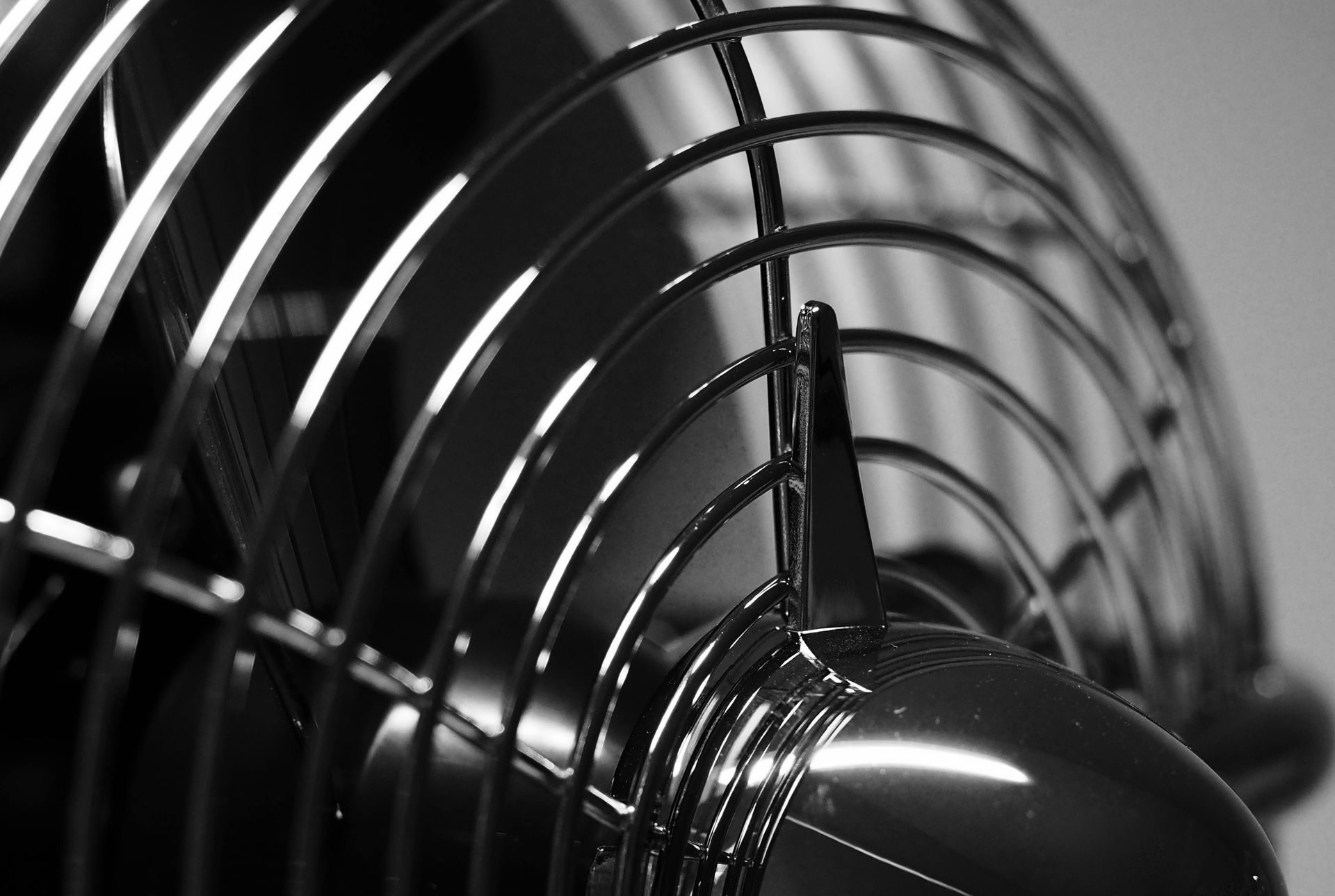
Circulation & Cooling Efficiency
Even with the best insulation and shade in place, your RV still needs proper airflow to stay cool. Stagnant air heats up fast, and without circulation, your AC will struggle to keep up. This section focuses on optimizing airflow, improving cooling performance, and using your RV’s systems (and a few helpful gadgets) to keep things comfortable even during the hottest stretches of summer.
Run Fans Strategically
Fans are your best friend when it comes to keeping air moving and making your RV feel cooler, even when the actual temperature hasn’t dropped much. Proper fan placement can help you draw in cooler air during the early morning and evening, or push hot air out when things start to heat up.
Here’s how to make the most of your fans:
· Create cross-ventilation: Open windows on the shaded side of your RV and place a fan across from them to pull cooler air through the space.
· Use ceiling fans or vent fans (like MaxxAir or Fantastic Fan): Run them in exhaust mode during the heat of the day to pull hot air up and out of your rig.
· Add portable fans: Place small oscillating fans in living areas and bedrooms to keep the air circulating evenly—especially helpful if you're running a single AC unit or trying to cool a larger rig.
· Box fans or clip-on fans: These are great for bunkrooms, lofts, or tight spaces where airflow tends to get stuffy.
Pro Tip: Pointing a fan out of a window or vent during the hottest part of the day helps draw hot air out of your RV faster than trying to blow cool air in.
Whether you're plugged in at a campground or boondocking with battery-powered fans, using airflow to your advantage is one of the simplest ways to make your RV feel more comfortable.
Run a Dehumidifier
Humidity makes everything feel hotter, especially in a small space like an RV. Even if your AC is working hard, high humidity can make the air feel sticky and uncomfortable. That’s where a dehumidifier comes in.
By pulling excess moisture from the air, a dehumidifier helps your RV feel cooler and more breathable. It also allows your air conditioner to run more efficiently, since it doesn’t have to work as hard to manage both temperature and moisture at the same time.
This is especially helpful if you're camping in places with high humidity like the South, near lakes, or during rainy seasons.
Added Benefits:
· Prevents condensation on windows and walls
· Helps reduce mold and mildew growth
· Keeps clothing, bedding, and furniture from feeling damp
Tip: Place your dehumidifier near the center of your RV or in high-moisture areas like bathrooms or kitchens for best results.
Clean Your ACs
Your air conditioner is one of the hardest-working appliances in your RV during the summer, but if it’s dirty, it’s not running at full power. Clogged filters and dusty coils force your AC to work harder, which means it cools less efficiently and can even start to overheat or short cycle.
Giving your AC unit a little routine care can make a big difference in both performance and energy use.
What to Clean (and How Often):
· Air filters: Remove and clean monthly (more often if you’re in dusty areas or using it daily). A simple rinse with warm water and mild soap works well.
· Intake vents & covers: Wipe down every couple of weeks to keep airflow unrestricted.
· Coils: At least once a season, open the shroud and gently clean the condenser and evaporator coils with a soft brush or coil cleaner spray.
Pro Tip: Want to go a step further while you're cleaning your AC? Consider installing a WackO RV AC Silencer Kit. Not only does it reduce the noise of your air conditioner by re-routing airflow through a quieter intake filter system, but it also helps improve overall airflow through the ducts, giving you more efficient cooling and a quieter living space. Get your WackO RV AC Silencer Kit Here.
It’s especially helpful in smaller RVs where the AC noise can dominate the room or if you're trying to sleep under a duct unit. Bonus: it includes a built-in filter that’s easy to access and change—no tools required.
Keeping your AC clean helps it cool faster, run quieter, and last longer—especially when it’s working overtime to beat that summer heat.
Long-Term Upgrades
If you’ve already nailed the daily habits and cooling hacks, it might be time to look at bigger-picture solutions. These upgrades require more time, effort, or upfront investment—but they can make a massive difference in your RV’s comfort, especially if you’re parked long-term or traveling through hotter climates regularly. From AC performance enhancements to structural shade solutions, these upgrades are designed to help you stay cooler for the long haul.

Your RV roof takes the full brunt of the sun all day long—and over time, it can become one of the biggest sources of interior heat. Traditional rubber or fiberglass roofs absorb heat, which radiates down into your living space. That’s where a roofing upgrade from RV Roofing Solutions can make a huge difference.
These specialty roofs are highly reflective that help block UV rays and reduce heat transfer. Many RVers report significantly cooler interior temps after upgrading, some even say it’s the single most effective cooling improvement they’ve made.
Why upgrade your RV roof:
· Reflects sunlight instead of absorbing it.
· Helps your AC run more efficiently.
· Reduces heat buildup and protects your rig from UV damage.
· Can also extend the life of your RV by preventing roof deterioration.
Good to Know: This is a bigger investment, best suited for long-term RVers or those already needing roof repairs or replacements. But if you’re parked in hot climates often, or live in your RV full-time, it can be totally worth it.
You can learn more at
RV Roofing Solutions and see real-world case studies from full-time RVers who’ve made the switch.
Consider an RV Roofing Solutions Roof

If your RV still has any incandescent or halogen light bulbs, it’s time to make the switch. Traditional bulbs put off a surprising amount of heat, especially in a small, enclosed space like an RV. When you’re trying to keep things cool, every degree matters.
LED lights are energy-efficient, long-lasting, and most importantly, they run cool. Many modern RVs come with LED lighting already installed, but if yours doesn’t, or if you’ve replaced a bulb or two along the way with incandescent by mistake, it’s worth double-checking.
Why LEDs Make a Difference:
· Produce almost no heat compared to traditional bulbs
· Use significantly less power (great for boondocking)
· Last much longer, reducing the need for frequent replacements
· Available in a range of color temperatures to suit your lighting style
Bonus Tip: Swapping out a few high-use lights, like those in the kitchen or living area, can make a noticeable difference in both temperature and energy usage, especially in the evening when every little bit of heat adds up.
Switch to LED Lights
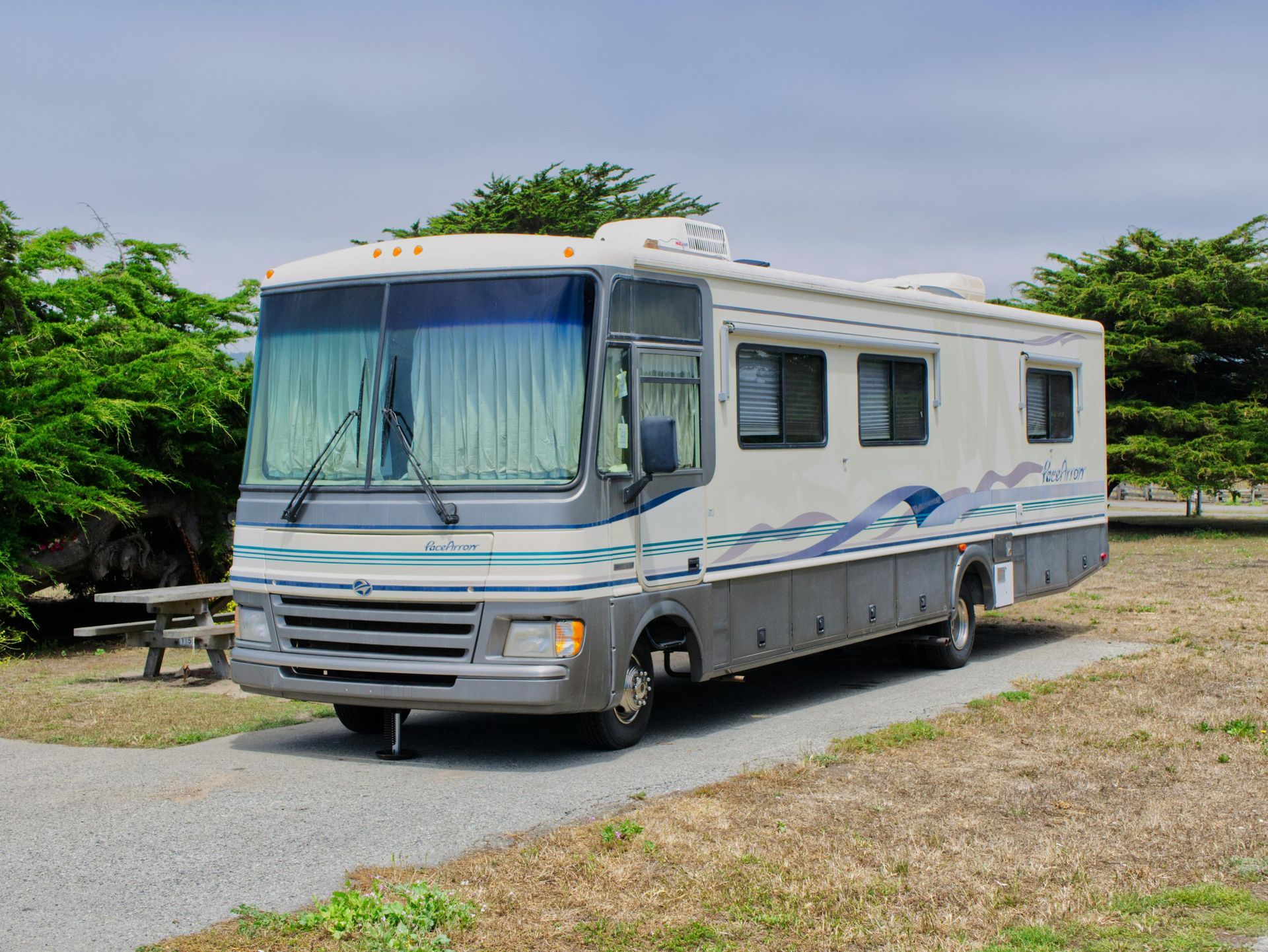
If you’ve ever tripped a breaker trying to run your RV’s air conditioner—especially on a generator or a 30-amp hookup—you already know how much power that first surge takes. That’s where a Soft Start or Micro-Air EasyStart upgrade can make all the difference.
These devices allow your air conditioner to start up with less power, reducing the electrical spike that typically happens when the compressor kicks on. Not only does this make it possible to run your AC in more power-limited situations (like boondocking with a generator or during peak campground hours), but it also reduces strain on your system over time.
Why it’s worth the upgrade:
· Helps run your AC on lower amp service or smaller generators.
· Reduces startup noise and strain on your AC unit.
· Ideal for rigs with multiple AC units or rooftop solar setups.
· Can extend the life of your air conditioner by lowering wear on startup
We recommend one of these:
or
Upgrade to a Soft Start or Micro-Air EasyStart
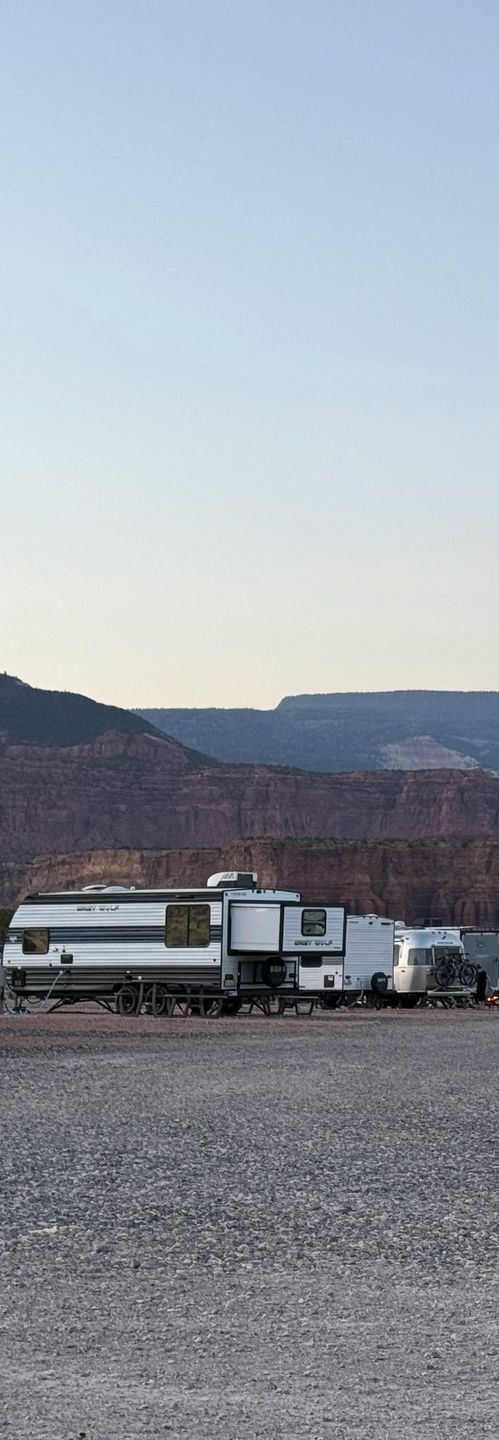
When you think about keeping your RV cool, it’s easy to focus on the windows and roof, but don’t forget about what’s underneath. The heat radiating up from pavement, gravel, or dry ground can warm your floors and add to the overall interior temperature, especially if you're parked in one spot for a while.
That’s where RV skirting comes in. Often used for winter protection, skirting is just as effective during hot months. It helps block rising heat from the ground and keeps cooler air trapped under your RV, especially when paired with good roof insulation and vent covers.
Why it helps in the heat:
· Blocks hot air from rising under your rig.
· Prevents radiant heat from warming your floor.
· Can improve AC performance by keeping the lower portion of your RV cooler.
· Adds a layer of protection for tanks, pipes, and gear stored underneath
Skirting Options:
· Vinyl or insulated custom skirting (professionally made or DIY).
· Foam board with zip ties or clips for temporary or budget setups.
· Heavy-duty fabric skirting kits that are easy to install and remove seasonally.
Tip: If you’re parked on asphalt, placing outdoor rugs or foam tiles under your RV and skirting area can help reduce heat even further.
Whether you're full-timing or just hunkering down through the summer months, underbelly insulation is a smart way to finish off your heat-blocking setup.
Insulate the Underbelly or Use Skirting

If you’re reading this before purchasing your RV (or thinking about upgrading), you’re already ahead of the game. Some RVs are simply built to handle heat better than others, and factoring in climate when you shop can save you a lot of discomfort (and money on upgrades) down the road.
Here’s what to look for if you plan to RV in hot climates:
· Dual-pane or tinted windows: These help block UV rays and reduce heat transfer.
· Well-insulated ceilings, walls, and floors: Look for higher R-values or “four-season” packages (though not all are created equal—research the details).
· Light-colored exterior: White or light-colored RVs reflect sunlight better than dark finishes.
· Multiple AC units: Larger rigs often come with two, essential for keeping cool in separate zones.
· ACs with ducted airflow: Helps distribute cool air more evenly throughout the rig.
· Thermal curtains or blackout shades pre-installed: Bonus points if they’re already built-in!
Bonus Tip: If you’ll be full-timing or parked long-term in high-heat areas, consider a fifth wheel or Class A with residential-level insulation and climate control features. Personally speaking we have an Alliance Paradigm and out of the 3 RVs we have owned it has by far been the best, We have hit 99 degree days and its been a comfortable 72 inside with the window shades open!
Choosing the right RV from the start won’t eliminate the summer heat,but it’ll definitely make managing it much easier.
If You Haven’t Bought Your RV Yet, or are planning an upgrade - Shop with Heat in Mind
Stay Cool, Travel Smart
Keeping your RV cool in the summer takes a little planning—but with the right combination of smart habits, airflow strategies, and long-term upgrades, you can enjoy the sunshine without the sweat. Whether you're on the move or parked for the season, every small change adds up.
Implement a few of these tips, or go all in, and you’ll start to feel a noticeable difference not just in temperature, but in how much more enjoyable your RV lifestyle feels during the hottest months.
Remember: Comfort on the road isn’t just about surviving the heat, it’s about making your RV feel like home, no matter the forecast.
Other blogs you might like...
